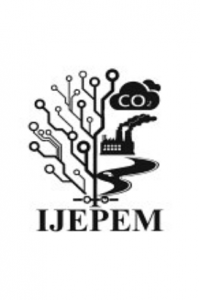Potential Toxic Elements Distribution Based on Interplay between Pollutants and Biochemical Remediative Amendments
Potential Toxic Elements Distribution Based on Interplay between Pollutants and Biochemical Remediative Amendments
Distribution, PTE's, remediation techniques, sewaged soils,
___
- [1] Alloway, B.J. (1990) Heavy metals in soils. John Wiley and Sons, Inc. New York, ISBN 0470215984
- [2] Xian, X., (1987) Chemical partitioning of cadmium, zinc, lead, and copper in soils near smelters. J. Environ. Sci. Health 6, 527-541.
- [3] Xian, X., (1989). Effect of chemical forms of cadmium, zinc, and lead in polluted soils on their uptake by cabbage plants. Plant and Soil 113, 257-264.
- [4] Forstner, U. and Salomons, W. (1980). Trace metal analysis on polluted sediments. Part I: Assessment of sources and intensities. Environ. Tech. Lett., 1, 494-505.
- [5] Scokart, P. Meeus-verdinne, k. and Borger, R. (1987) Speciation of heavy metals in polluted soils by sequential extraction and ICP spectrometry. Int. J. Environ. Analysis chem. 29: 305-312.
- [6] Saber, M.; Hoballah, E.; Azza, Sh. Turky and Doaa, I. Ali (2011). Microbial Decontamination of Enteric Pathogens in Sewaged Soils. Australian J. of Basic and Appl. Sci., 5(11): 1312-1320.
- [7] Saber, M., Azza, Sh. Turkey, Fatma, H. Abd-el-Zaher and Dalia, M, Abd-El-Mola (2011) Biological characterization of sandy soil irrigated with sewage effluent for extended periods. International Journal of Basic and Applied Sciences, Vol: 1 No 1 pp 68-76
- [8] Saber, M (2012) Existence and decontamination of HVC, infectious enteric bacteria and parasites in sewaged soils. (personal communication) .
- [9] Zaghloul, A and Abou-Seeda, M. (2003) Lead release characteristics in some Egyptian soils in relation to their properties. Egypt. J. Appli. Sci., vol.17, p. 372-385
- [10] Davis R., Carlton-Smith C (1981) The preparation of sewage sludges of controlled metal content for experimental purposes. Environmental Pollution Series B, Chemical and Physical, 2: 167–177.
- [11] Coppola, S., Dumontet, S., Portonio, M., Basile, G., and Marino, P., (1988) Effect of cadmium-bearing sewage sludge on crop plants and microorganisms in two different soils. Agricultural Ecosystems and the Environment 20, 181-194.
- [12] Syliva, D., Willson, D., Graham, J., Maddox, J., Mlllner, P., Morton, J., Skipper, H., Wright, S. and Jarstfer, A. (1993) Evaluation of vesicular-arbuscular mycorrhyzal fungi in diverse plant and soil Soil biology and biochemistry 25(6); 705-713.
- [13] Ma LQ, Rao GN (1997). Chemical fractionation of cadmium, copper, nickel, and zinc in contaminated soils. J. Environ. Qual., 26: 259-264.
- Yayın Aralığı: Yılda 2 Sayı
- Başlangıç: 2018
- Yayıncı: Yasin Akın AYTURAN
Modern Technologies in Remediation of Heavy Metals in Soils
Measurements of Ambient Particle Material Level in Shopping Centers in Konya City
Mina Naseer Qasim, Sukru Dursun
Mohamed SABER, Essam HOB ALLAH, Soad EL-ASHRY, Alaa ZAGHLOUL
Application of Raman Spectroscopy to Pollution Control Using Wave Numbers
Economic Growth and Air Pollution Dynamics: The Case of Canada
Achille Dargaud FOFACK, Steve YAW SARPONG, Damis FEROUZ KAMNA
